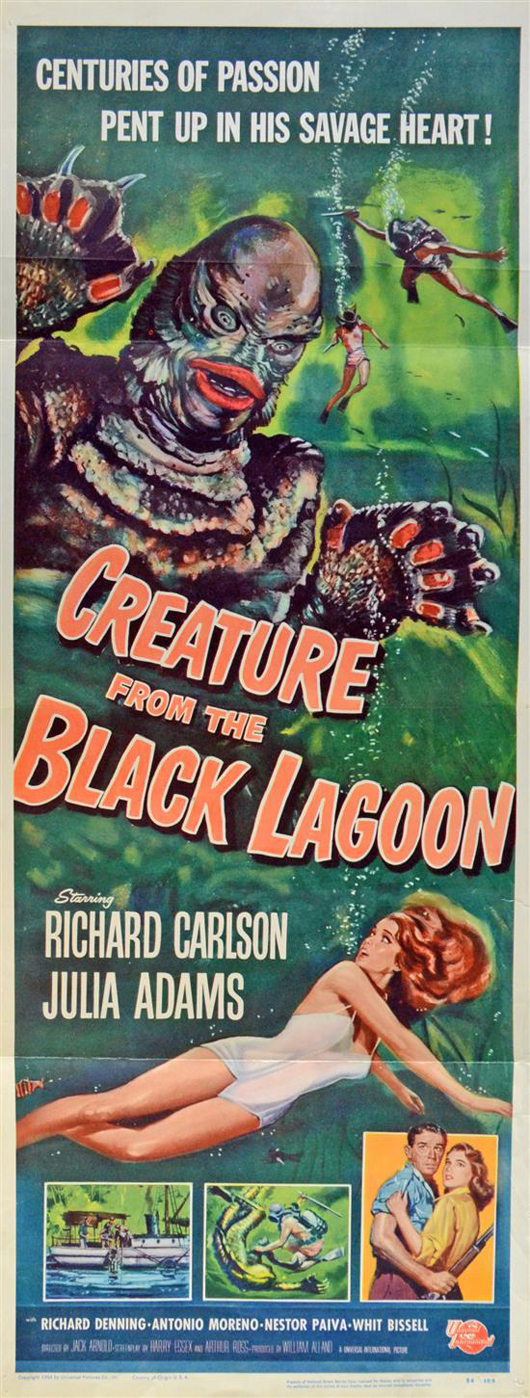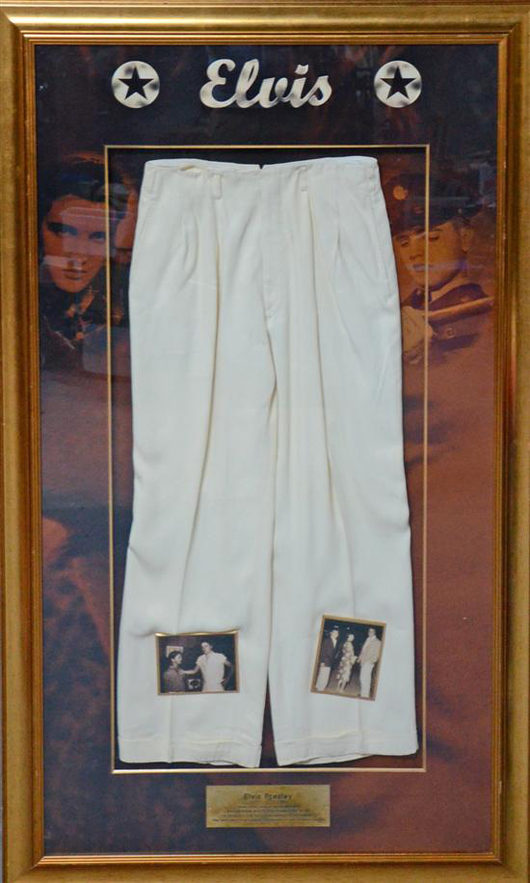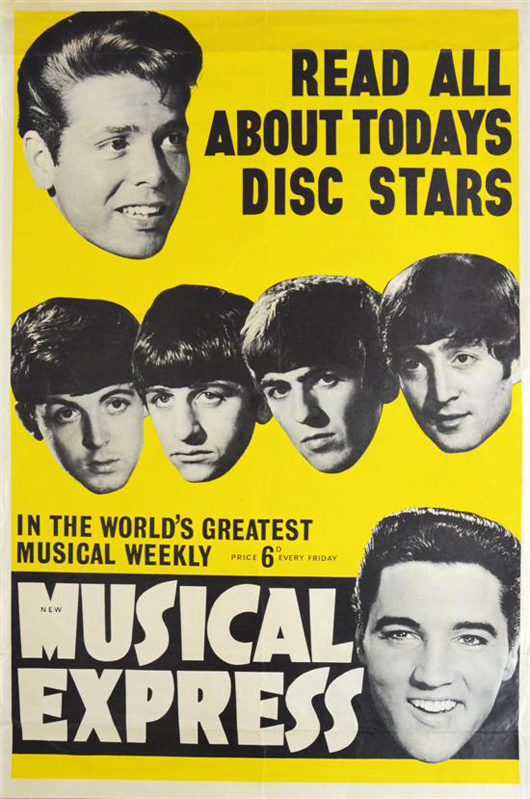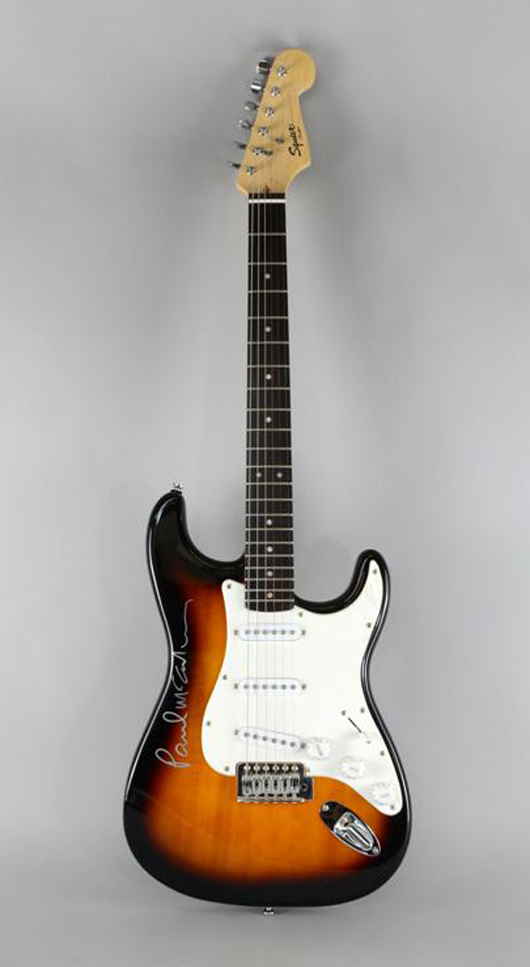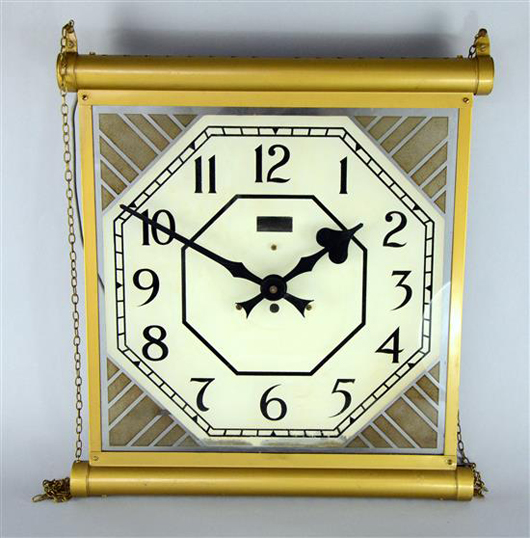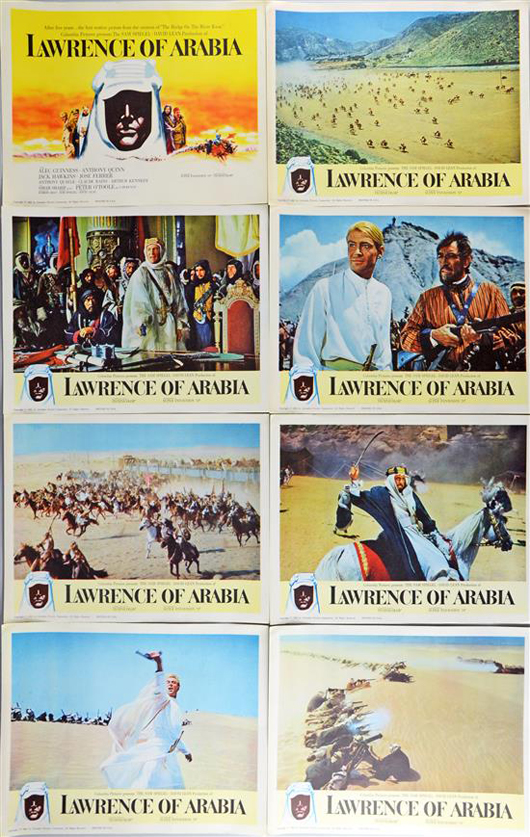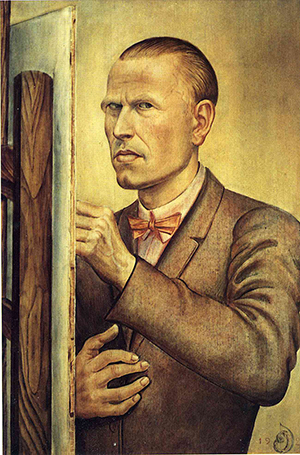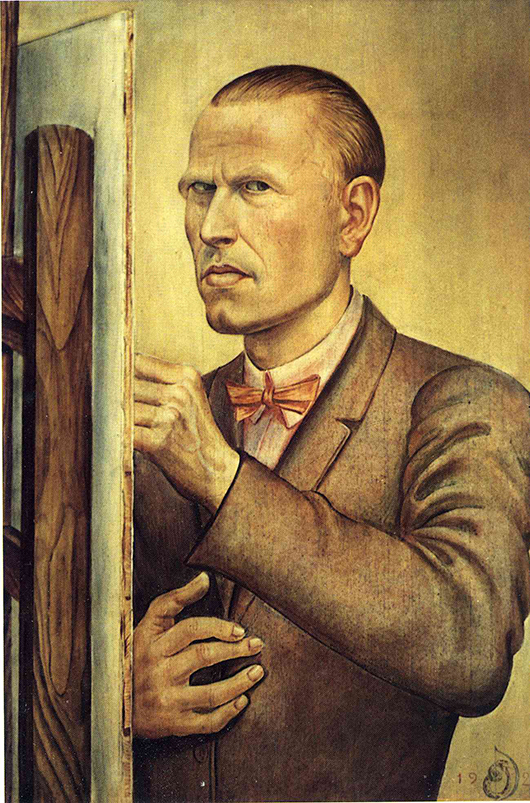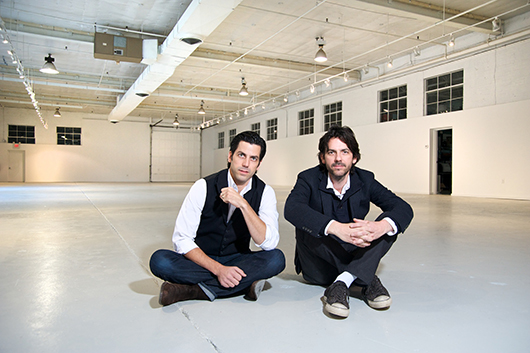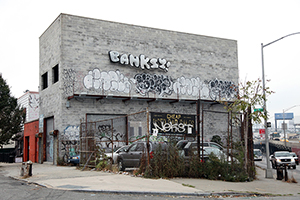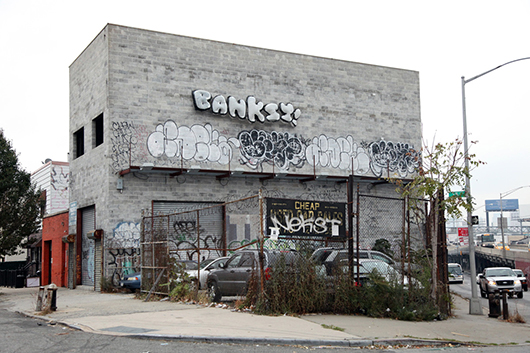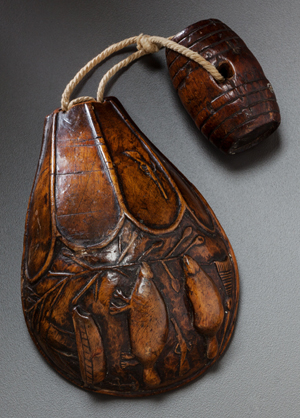
Eastern woodlands carved wood belt cup, circa 1760, carved of maple burl, depicting two beavers, a sailing ship, two flintlock guns and a broom-like object, the barrel-shape toggle attached with string, 4 3/4 inches. Estimate: $10,000-$20,000. Heritage Auctions image. DALLAS – A grandfather’s long-ignored collection of Indian art and artifacts could bring a New Jersey family more than $125,000 when 203 lots from the famed Valentine “Val” Pasvolsky cross the block Nov. 15 at Heritage Auctions. The American Indian Art Signature® Auction is led by a rare Sioux boy’s pictorial beaded and fringed hide shirt, with a note on the hide tying it to the Battle of Little Big Horn, which is estimated to bring more than $30,000.
LiveAuctioneers.com will provide Internet live bidding. The auction will begin at 10 a.m. Central time.
It wasn’t until Delia E. Sullivan, director and senior specialist of American Indian Art at Heritage, opened the boxes that Pasvolsky’s grandchildren realized just how important the collection truly was. Sullivan was the first specialist to see the collection in nearly two decades.
“It’s likely the hobby won’t see another collection like this for a decade or more,” Sullivan said. “There are some really wonderfully important things in this collection. A find like this only happens once or twice in a career.”
Tucked away for decades was a pair of Southeast beaded hide moccasins, estimated to bring $20,000 plus, a Crow painted parfleche medicine case, which could sell for $7,000plus, and a plateau beaded hide cradleboard, which could bring $8,000-plus.
Pasvolsky was an U.S. Army sergeant when he made a name for himself from the 1950s through the 1970s as a generous and ambitious numismatist who regularly took top honors in coin shows throughout New England, Canada and the UK. He was honored by the American Numismatic Association in 1975. His passion for both numismatics and American Indian art started shortly after immigrating to the United States from Russia at age 14. He collected primarily between the 1930s and 1970s. His collection includes rarities from across North America, with particular emphasis on tribes of the Northeast with selections of South American tribal art as well. At one point, Pasvolsky made headlines nationwide for owning a vest worn by the Apache Chief Geronimo.
By the early 1960s, he and his wife had turned an 18-room house in Lakewood, N.J. into the Indian Village Museum & Trading Post, a roadside attraction and museum. Pasvolsky regularly brought his entire family to county fairs, schools and scout troop meetings, complete with a tepee and full headdress, shirts and pants.
Highlights from the 203 lots from the Valentine Pasvolsky Collection also include:
– Collection of 16 rare studio portraits of Crow Indians, mounted on board, originating from Montana, 1909. Estimate: $3,000-plus;
– Apache beaded hide male doll with painted and beaded facial features, circa 1885. Estimate: $1,000-plus;
– Santee Sioux beaded hide vest, circa 1890, decorated on the front with abstract floral/foliate motifs stitched in shades of blue, green, yellow and pink. Estimate: $4,000-plus;
–Blackfoot beaded hide shirt, circa 1915, with eight-point stars alternating with “fringed” hourglass motifs. Estimate: $8,000-plus.
Additionally, the Nov. 15 auction presents a strong selection of early art and pre-Columbian pieces, to include a rare prairie grizzly bear claw necklace, circa 1835, which could sell for $20,000-plus, a large Veraguas gold pendant representing an eagle, circa A.D. 900-1200, and estimated to bring $18,000-plus, and an Eastern woodlands carved wood belt cup, circa 1760 and depicting two beavers, a sailing ship and two flintlock guns, which could hammer for $10,000-plus.
Among the notable collections in the auction is a group of American Indian art formerly owned by artist Eanger Irving Couse, including an Apache coiled storage jar, circa 1920, estimated to sell for $2,000-plus, and a Santa Clara blackware pitcher, circa 1910, and once used as a model in hundreds of paintings by the artist, is expected to bring $1,000-plus.
ADDITIONAL LOTS OF NOTE
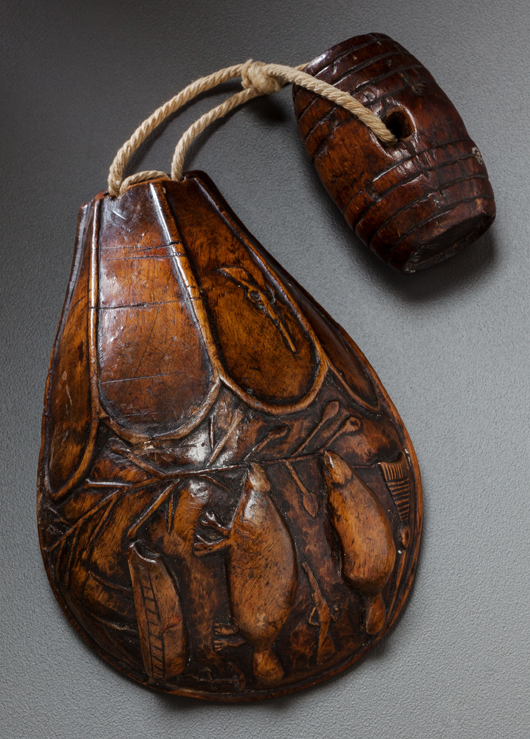
Eastern woodlands carved wood belt cup, circa 1760, carved of maple burl, depicting two beavers, a sailing ship, two flintlock guns and a broom-like object, the barrel-shape toggle attached with string, 4 3/4 inches. Estimate: $10,000-$20,000. Heritage Auctions image. 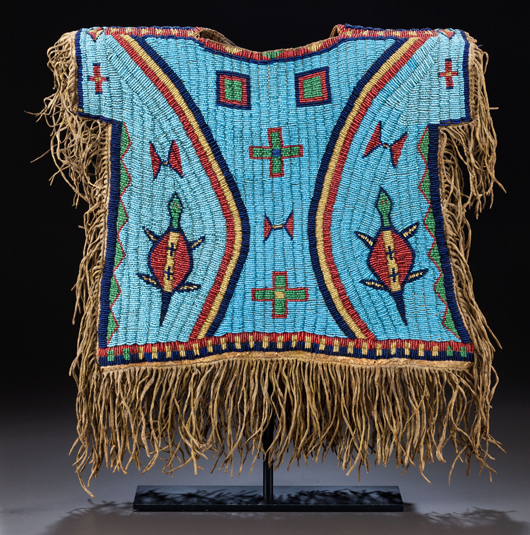
Sioux boy’s pictorial beaded and fringed hide shirt, circa 1875, with ink inscription on the front interior: ‘Captured on June 25, 1876 at the Battle with Indians on the Little Big Horn River, M.T. Commanded by General G. A. Custer, U.S.A. by Louis Rott 1st Sgt., Co. K, 7th Cav.’ Estimate: $30,000-$50,000. Heritage Auctions image. 
Pair of Southeast beaded hide moccasins, circa 1830, each 9 1/2 inches long. Estimate: $20,000-$30,000. Heritage Auctions image. 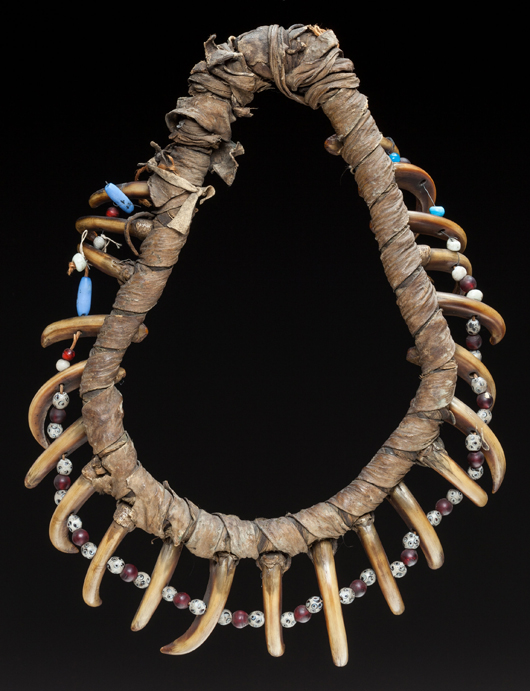
Prairie grizzly bear claw necklace, circa 1835, composed of 22 grizzly bear claws, interspersed with globular glass beads, 15 inches. Estimate: $20,000-$30,000. Heritage Auctions image. 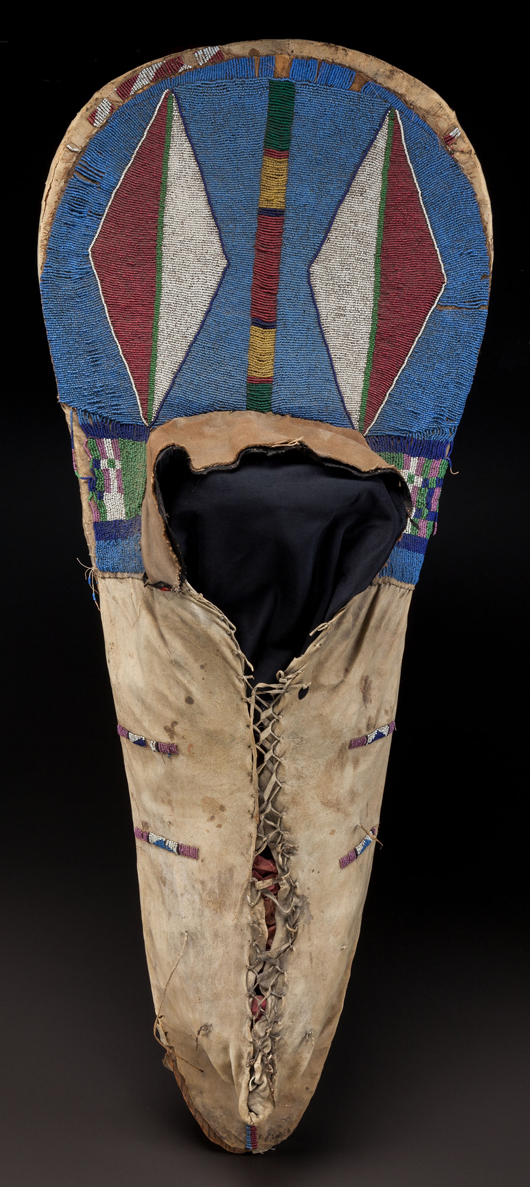
Plateau beaded hide cradleboard, circa 1880, composed of a wood backboard, covered in hide, the bow decorated with a pair of diamonds, flat-stitched in various shades of glass seed beads, hide fringe at back, 41 3/4 inches long. Estimate: $8,000- $12,000. Heritage Auctions image. 
Crow painted parfleche medicine case, circa 1880, trimmed with red and navy blue wool trade cloth and side fringe with red ochre pigment, 17 inches. Estimate: $7,000-$9,000. Heritage Auctions image.



